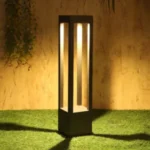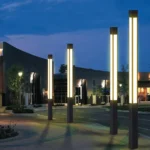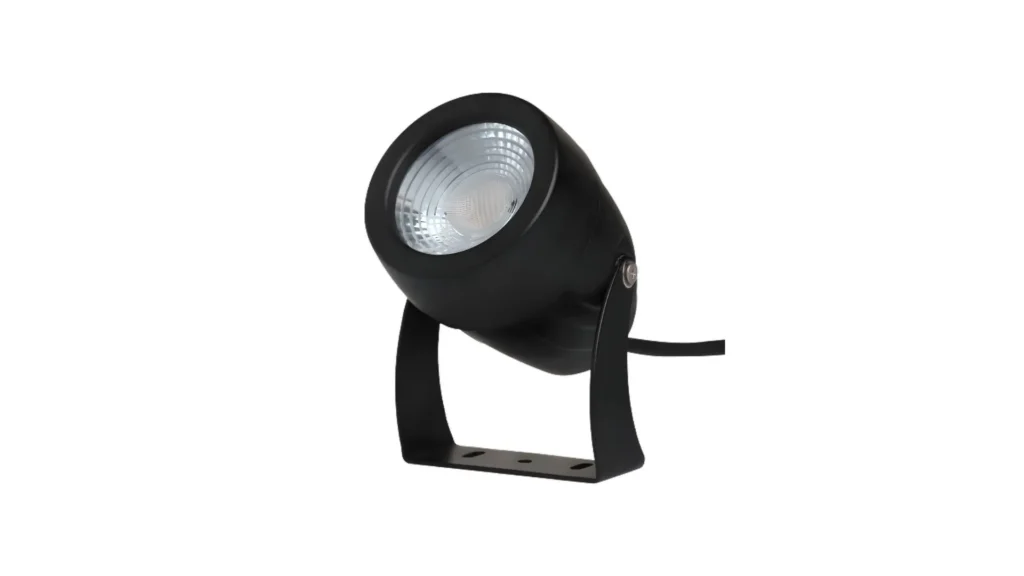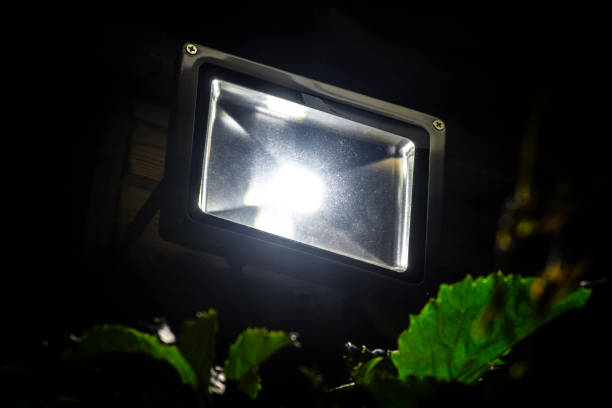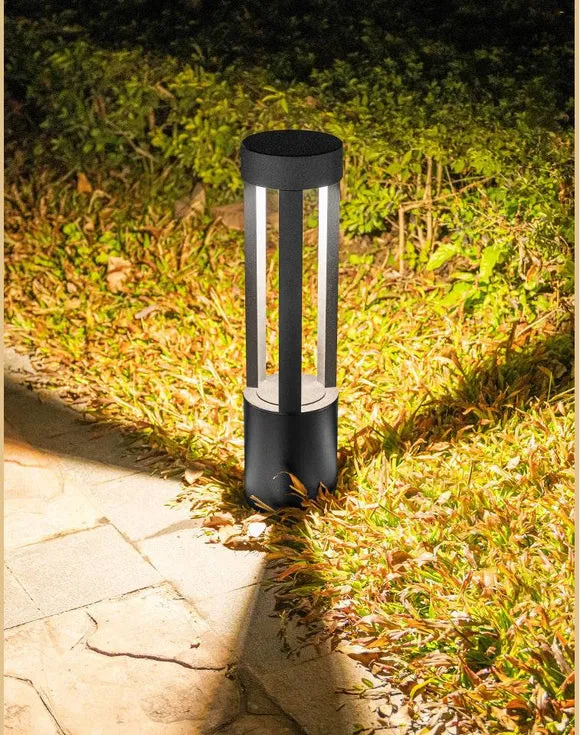

Key Features
1. Types of Landscape Lights:
- Path Lights: Small fixtures that provide low-level illumination along walkways, driveways, and garden paths. They usually have a dome or cap to direct light downward and prevent glare.
- Accent or Spotlights: Narrow-beam lights used to highlight specific landscape features such as trees, statues, or architectural details. Adjustable to focus light precisely where needed.
- Flood Lights: Wide-beam lights that provide broad coverage, ideal for illuminating large areas like lawns, facades, or garden beds.
- Well Lights: Installed in the ground to cast light upwards. Suitable for highlighting trees, walls, or building facades.
- Deck and Step Lights: Small, discreet fixtures installed on decks, stairs, or railings to provide safe navigation and prevent tripping.
- Bollard Lights: Freestanding lights used to illuminate pathways, driveways, or open spaces. They provide 360-degree lighting coverage.
- Underwater Lights: Waterproof lights designed for use in ponds, fountains, or other water features to create dramatic effects.
- String Lights: Decorative lights, often used for festive occasions, to add ambiance to outdoor areas, patios, and pergolas.
- Solar Lights: Powered by solar panels and typically used for pathways, gardens, and accent lighting. They do not require wiring and are energy-efficient.
2. Power Source:
- Low Voltage (12V): Most common for landscape lighting. Safe, easy to install, and energy-efficient. It requires a transformer to step down from standard line voltage (120V) to low voltage.
- Line Voltage (120V): Provides higher power and is used for large areas or more intense lighting needs. Requires proper installation by a qualified electrician.
- Solar-Powered: Lights powered by solar panels, ideal for locations without access to electricity. They charge during the day and illuminate at night, reducing energy consumption.
3. Material and Finish:
- Materials: Common materials include brass, copper, stainless steel, aluminum, and durable plastics.
- Description: High-quality materials such as brass and copper offer durability, resistance to corrosion, and a longer lifespan. Aluminum is lightweight and cost-effective, while stainless steel is robust and weather-resistant.
4. Color Temperature (K):
- Range: Typically between 2700K (warm white) and 5000K (cool white).
- Description: Warm white (2700-3000K) is commonly used to create a cozy and inviting atmosphere, ideal for gardens and patios. Cool white (4000-5000K) provides brighter illumination for task lighting and security.
5. Luminous Flux (Lumen Output):
- Range: Usually between 100 to 1,500 lumens, depending on the fixture type and application.
- Description: The lumen output determines the brightness of the light. Lower lumens (100-300) are used for subtle accent lighting, while higher lumens (500-1500) are used for security and task lighting.
6. Beam Angle:
- Range: Typically between 15° (narrow beam) to 120° (wide beam).
- Description: Narrow beams (15°-30°) are ideal for focused accent lighting, such as highlighting trees or statues. Wider beams (60°-120°) provide broader coverage for general illumination or floodlighting.
7. IP Rating (Ingress Protection):
- Range: Typically IP44 to IP68.
- Description: The IP rating indicates the level of protection against dust and water. For outdoor landscape lighting, an IP rating of at least IP44 (protected against splashing water) is recommended, while IP67 or IP68 is ideal for lights exposed to heavy rain or submerged in water features.
8. Dimming and Control Options:
- Types: Manual dimming, smart controls (Bluetooth, Wi-Fi, Zigbee), timers, photocells, and motion sensors.
- Description: Dimmable lights provide flexibility in adjusting brightness levels to create different moods. Smart controls allow for remote operation and integration with home automation systems.
9. Lifespan:
- Range: Typically 20,000 to 50,000 hours for LED landscape lights.
- Description: Indicates the expected operational life of the light source. Longer lifespans reduce maintenance and replacement costs, especially important for outdoor applications.
10. Efficiency (Lumens per Watt):
- Range: Usually between 70 to 150 lm/W.
- Description: Efficiency measures how well the landscape light converts electrical energy into visible light. Higher lumens per watt indicate more efficient lights.
11. Installation Flexibility:
- Features: Adjustable heads, stakes, wall mounts, or ground mounts.
- Description: Many landscape lights come with adjustable heads for precise aiming or different mounting options for flexibility in installation.
12. Color Rendering Index (CRI):
- Range: Typically 80 or higher.
- Description: CRI measures the light’s ability to render colors accurately compared to natural light. A CRI of 80 or above is considered good for most landscape applications.
13. Energy Source and Consumption:
- Types: Solar, battery-powered, or wired (electric).
- Description: Solar and battery-powered lights are ideal for locations without easy access to electrical power. Wired lights are more reliable for consistent illumination and are often used in larger installations.
14. Weather Resistance:
- Features: UV-resistant coatings, rustproof materials, weatherproof construction.
- Description: Outdoor lights should be built to withstand varying weather conditions, including UV radiation, rain, and snow, to maintain performance over time.
Landscape Lighting Product
Write with clear, concise language to inform and engage your audience. Consider what matters to them and provide valuable insights.






